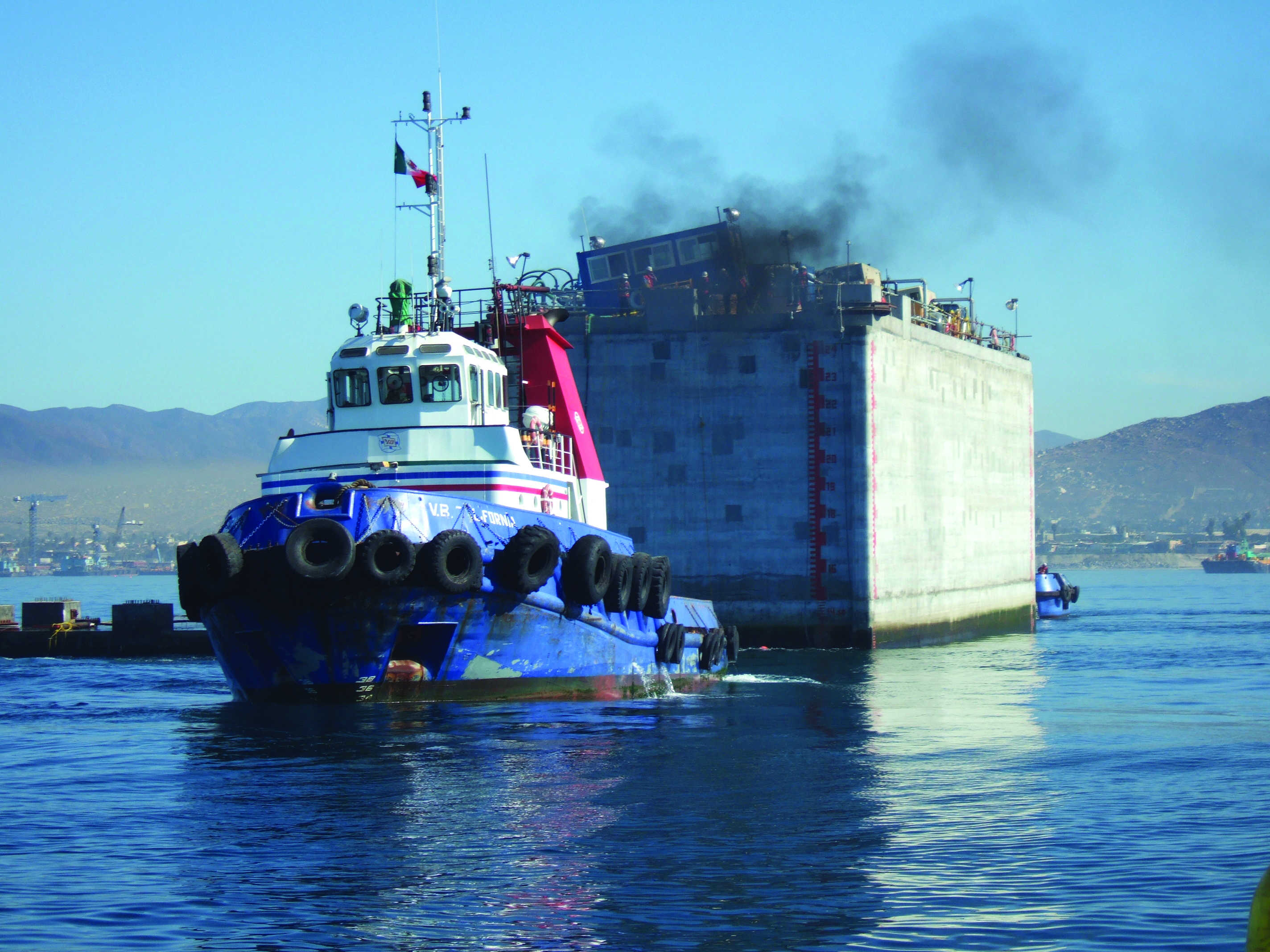World-record caisson breakwater
The massive swell of the Pacific Ocean and the threat of storms pose big challenges to coastal developments.
Conditions were particularly demanding when it came to building the first natural gas terminal for the Mexican state of Baja California on a waterfront with no natural harbor. The site had a one- in-1,000-year significant wave height of 30 feet (9.2 meters). For tankers to unload safely, they must be protected from the powerful and unpredictable waters.
The solution was to design and construct the world’s largest caisson breakwater just off the coast. It comprises 12 massive concrete components, each up to 246 feet (75 meters) long, 125 feet (38 meters) wide and 84 feet (25.6 meters) high – the size of a multistory building, and individually weighing up to 32,000 tons. The barrier is almost 2,150 feet (655 meters) long and, when completed, was the only one of its kind built in such deep water, with depths up to 92 feet (28 meters).
Building this huge structure involved an innovative approach using tugs to tow and maneuver each of the dozen components into position. The caissons were then filled with sand as ballast to anchor them into position and resist the advancing storm waves.

The design incorporated an innovative system of interlocking concrete armor units, called Core-Locs, to stack around the base of the breakwater. These provide a defense against erosion of the seabed caused by swirling currents generated at the structure’s base. The breakwater’s roughened caisson base significantly reduces caisson size and weight – and minimizes the overall impact on the sensitive marine environment at the project site.
For energy company Energía Costa Azul, the breakwater provides a safe environment for the tankers loading and unloading at this important location for Mexico’s infrastructure. AECOM was the project’s lead designer.






